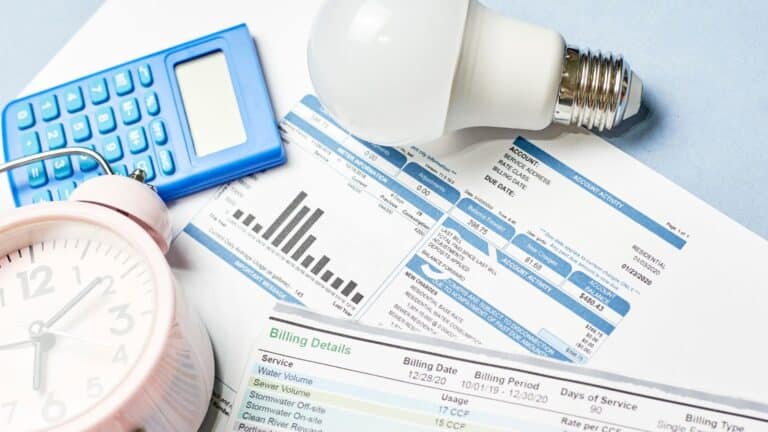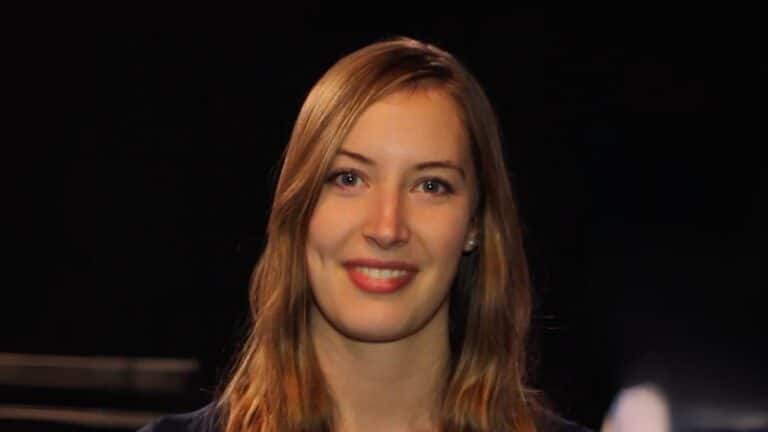This website uses cookies as well as similar tools and technologies to understand visitors’ experiences. By continuing to use this website, you consent to Columbia University’s usage of cookies and similar technologies, in accordance with the Columbia University Website Cookie Notice.
-
Transcript
-
Melissa Lott: [00:00:00] It may not seem like it when it actually happens, but the grid as a whole isn’t really failing. During a power outage, it’s normally a local thing, some type of accident and equipment malfunction, or maybe a downed power line. But the bigger system is still functioning around that local or regional issue. But what would it take to bring down the whole grid to force that giant array of machines and cables and electronics to just all stop at once? That is what Texas almost found out on Valentine’s Day 2021. That Sunday, Texas was days into a crippling winter storm, and the engineers who are running the state’s independent electric grid were scrambling to keep it stable. Power supplies were getting stretched as nighttime wore on and the temperatures dropped close to zero. [00:00:43][43.0]
Catherine Traywick: [00:00:44] It was most hands leading up to that 9:00 hour because they knew this is the this is crunch time. This is when things are going to get really tight. We need to be able to keep everything stable, make sure the lights stay on. [00:00:57][13.3]
Melissa Lott: [00:00:59] This is Bloomberg editor Catherine Traywick. We heard from her in episode one. She’s part of the team of reporters who were covering the storm’s impact on the energy system in Texas. If you look at the control room for Texas’s grid operator, you might think it looks a lot like a NASA control room. At the center is this movie theater sized screen filled with maps and charts and numbers. These are the vital signs of the grid. And there’s a lot of workstations that are facing that screen, each of which has a separate monitor. And that Valentine’s Day night, the people at each of those workstations, they were on high alert because across Texas, they were seeing demand for electricity reaching historic highs as people try to heat their homes. And they were trying to make sure that there was enough electricity to go around. [00:01:38][38.1]
Catherine Traywick: [00:01:38] When demand is climbing, essentially. You might see like a line chart that shows system demand creeping up, creeping up. And then there’s another line that shows system capacity. And you want the capacity to be in line with or higher than the demand line to make sure you have enough electricity supply to power all of those heaters that everyone’s running. [00:02:00][21.3]
Melissa Lott: [00:02:00] If they didn’t have enough supply to meet demand during the storm, if they got too far out of balance, Texas would have to shut off power to homes and businesses. And that is what workers in the control room had in mind as 9 p.m. approached. This was when demand was expected to peak. [00:02:14][14.1]
Catherine Traywick: [00:02:15] They get to the 9 p.m. hour. The peak happens. Demand starts to come off a little bit and everyone brings a sigh of relief like we did it. We’re in the clear now. [00:02:24][8.9]
Melissa Lott: [00:02:25] The control room relaxed a bit, but then a couple of hours later, they saw something really alarming on the giant screen in front of the room. [00:02:32][6.8]
Catherine Traywick: [00:02:32] There’s a couple of different maps, and one map is a map of the state of Texas, and it has little dots to show you where the power plants are. And if they’re green, they’re running. And if they’re red, they’re not running. They thought they had passed the worst. And then right around 11 p.m., the green dot start flipping to red and they start seeing plants completely coming offline. [00:02:56][23.6]
Melissa Lott: [00:02:57] A worst case scenario was suddenly unfolding. They saw three coal plants and a gas plant shut down. Those plants had frozen. [00:03:03][6.1]
Catherine Traywick: [00:03:03] And these are big plants. And when those big plants start coming off, that’s a real danger. [00:03:08][4.4]
Melissa Lott: [00:03:09] And that moment was a turning point because the cascading plant closures caused a supply demand imbalance that was so dramatic that they threatened to cause the state’s entire grid to crash. [00:03:18][9.2]
Catherine Traywick: [00:03:19] Which could mean that the entire grid system goes black. [00:03:23][4.3]
Melissa Lott: [00:03:25] And if it had crashed, it could have taken weeks or even months to get it up and running again. This is the big switch, a show about how and why we’re cleaning up our energy system as we transition to a net zero world. In order to slow climate change, we need to transform our buildings, homes, cars and the economy to reduce greenhouse gas emissions as quickly as possible. But how do we do it right? I’m Dr. Melissa Lott, and I’m the director of research at the Center on Global Energy Policy at Columbia University. And I study the technologies and systems that keep our electric grid running. This is episode four of our five part series on the zero carbon grid in this installment. Balancing the Grid. How do you manage supply and demand as electricity systems become more diverse, digital and distributed? [00:04:18][53.0]
Newsreel: [00:04:23] Our top story, 4 minutes and 37 seconds. That’s how close Texas was from a total power grid collapse last week. It was confirmed today at the ERCOT board meeting. Marcelino Bonito listened in. He joins us live now Marcelino. Well, Ron, we all know last week was absolutely awful, but ERCOT telling us today things could have been far worse for a lot longer. [00:04:44][20.6]
Melissa Lott: [00:04:45] So how could Texas have been less than 5 minutes away from a total grid collapse? And what do we actually mean by this word collapse? So when those little green dots on that giant screen in ERCOT suddenly started turning red, the engineers weren’t actually worried about a single power plant or even three power plants. They were worried about how all the power plants on the screen were working together. Here’s Katherine Treybig again. [00:05:08][23.5]
Catherine Traywick: [00:05:09] Not just because they’re providing so much electricity, but because those plants, because they have these big spinning turbines are really important for maintaining the electricity flow on the grid, which is called frequency frequency. [00:05:24][15.5]
Melissa Lott: [00:05:25] It’s one of those things that we learn about in eighth grade science class, but most of us don’t really think about it too often after that. Our electric grids, for the most part, they run on alternating current or AC. This means that the wave form reverses itself and cycles with voltage flipping back and forth as it runs from power plants to wires to our home. The number of cycles per second is called the frequency. Grids around the world, they operate at different frequencies. But here in the US, 60 hertz is the magic number. So picture those big natural gas and coal and nuclear power plants. They’re feeding the grid and they have these giant spinning machines that are driven by steam. Those spinning machines have to rotate 60 times per second or 60 hertz if they want to maintain the proper frequency. And if the frequency gets too high or too low, well, those spinning machines can start to vibrate and shake. And you can actually see big pieces of metal being sheared off. [00:06:19][54.0]
Catherine Traywick: [00:06:20] Let’s say that you have a big gas plant that has a big spinning turbine. If the frequency gets too low, that turbine might start slowing or it might start vibrating. And once it starts vibrating, it could break or parts that are in and around it could get damaged. [00:06:37][17.1]
Melissa Lott: [00:06:38] This damage could take the power plant out of commission for weeks. And this is why power plants, well, they have safeguards protection. They’ll automatically trip off line if the frequency will get outside of that normal range. But this comes with dangers. If one power plant trips off line, it can cause frequency on the grid to fall even further, which makes other plants more likely to trip off line and so on. And that domino effect, it’s what started to play out in Texas. At first we were seeing power plants freeze, but then others shut down as the frequency dropped. [00:07:08][30.1]
Catherine Traywick: [00:07:09] And that just makes the problem even worse because now we’re losing generation, not even because of the weather, but because of this esoteric thing that’s happening on the grid now. [00:07:18][9.7]
Newsreel: [00:07:20] With the frozen tundra leaving more than 3 million in the state without power. Governor Greg Abbott calling for an investigation into the Electric Reliability Council of Texas, which manages 90% of the Lone Star State’s electrical grid. [00:07:33][12.4]
Melissa Lott: [00:07:33] And when 11 p.m. rolled around on the night of February 14th, the people in our COTS control room were staring at those red dots that were suddenly spreading across the map in Texas. They knew something that no one else did. They were witnessing the start of a frequency crisis that could potentially tear apart the mechanical insides of power plants. The process of repairing and restarting them could take weeks or even months, and it would rely on something called a black start. [00:07:58][24.6]
Catherine Traywick: [00:07:59] I think that most of us don’t appreciate that you actually need electricity to make electricity. [00:08:03][4.5]
Melissa Lott: [00:08:04] In the event of a black start, each power plant would have to be restarted individually. [00:08:08][3.6]
Catherine Traywick: [00:08:09] You can’t just go in on Monday and flip a switch and turn it back on because it needs power to energize so that it can start producing more power. [00:08:15][6.7]
Melissa Lott: [00:08:16] This means that if the whole grid had gone down, the power plant would have needed an external source of electricity to get it going again. Then these mobile generators and the power plants, they would have needed to do a delicate dance to safely get everything running again. [00:08:29][13.0]
Catherine Traywick: [00:08:30] You’d probably have to truck in larger generators that are powered by diesel to try to get some energy flowing into the plant. Enough energy that you can power the equipment that’s needed to boil, the water, that’s needed to create the steam, that’s needed to power the turbine. And so you’re energizing the plants. Little by little. And once you get the plant up to a point where the whole plant is running, you can’t just start sending electricity out because the demand would be too great. It would fail again. So what you would need to do is start using the electricity that it’s producing to slowly energize a limited set of transmission lines. And what you’d probably do is have, you know, a dozen or so islands around Texas that you’re trying to re-energize at the same time. The process is extremely slow, not just because it takes a long time. Time to bring in the generators and to power equipment bit by bit. But also they have to go slow just to make sure that they’re not damaging anything. [00:09:31][60.8]
Melissa Lott: [00:09:31] So the grid operator in Texas had a terrible choice in February 2021. They could preemptively shut off power to millions of people or risk a catastrophic breakdown of the system. [00:09:41][9.7]
Catherine Traywick: [00:09:42] And then that’s at the point at which they say we have to start cutting power. [00:09:46][4.7]
Elta Kolo: [00:09:51] I never thought my non energy friends would ask me about ERCOT nor know what ERCOT is and does. [00:09:57][6.3]
Melissa Lott: [00:09:58] This is Dr. Elta Kolo. She’s referring to the Texas grid operator, the Electric Reliability Council of Texas, or ERCOT. Does the kind of person who obsesses over the data and decisions that are coming out of a place like ERCOT. She’s an expert in power systems, more specifically an expert in something called the Grid Edge. [00:10:16][18.0]
Elta Kolo: [00:10:16] And when you hear this kind of wonky terminology about grid edge, it’s really thinking about, okay, what is on the poles and wires leading up to your home and what technology have you invested in as a consumer. Right. So think about your Tesla, Powerwall, think your solar panels, think your, you know, your plug that you charge your electric vehicle with. So that’s when we talk about the grid edge, that’s really that it’s really where the grid meets your home and what it is that you do at home. [00:10:42][26.0]
Melissa Lott: [00:10:45] In the wake of the Texas blackouts, a lot of people wondered, could we have managed supply and demand differently to prevent the widespread failures? And in the future, can we give ERCOT a different set of resources, a different set of tools to call on to support the grid when the frequency starts to drop? To answer this question, we have to travel to the edge of the grid. It’s a place where tremendous technological change is happening, and it’s where we can actually reshape demand to better balance the electricity system. So, for example, there’s thousands of electric vehicles and solar panels and home batteries that are scattered across Texas. Many people relied on them during the outages. But what if there were hundreds of thousands or even millions of EVs and home batteries around the state? Could local utilities call on these resources to act like virtual power plants and allow the grid operator to manage frequency and prevent bigger outages? [00:11:34][49.4]
Elta Kolo: [00:11:35] It’s a great question. So when you are able to optimize all of those as part of a larger pool of assets, you’re creating one large flexible asset with all of these little tidbits that we are able to provide from our individual homes. [00:11:51][15.8]
Melissa Lott: [00:11:52] So basically, you’re telling me that I can be a power plant if I want to? Absolutely. I can just be a power plant, which is like a childhood dream, I think. And some. [00:12:00][8.9]
Elta Kolo: [00:12:01] Yes. You can be a part of a virtual power plant, right? [00:12:04][2.9]
Melissa Lott: [00:12:08] When you think of a puzzle pieces going together to create a virtual power plant, like what does that look like in your mind? What do you see? [00:12:15][6.8]
Elta Kolo: [00:12:16] I see it as a much more powerful asset because if we think about a traditional power plant, it is location constrained. [00:12:21][5.7]
Melissa Lott: [00:12:23] And what does that mean? [00:12:23][0.6]
Elta Kolo: [00:12:24] It’s stuck on one part of the grid. It’s not like you can pick it up and move it. The fabulous thing about a virtual power plant is that it lies all over the state, right? So if we think about Texas, we think about California. You have all of these different puzzle pieces in different parts of the state. [00:12:39][15.1]
Melissa Lott: [00:12:46] Virtual power plants can be a lot of different things. And Alda has basically built her career researching how to build and optimize them. Today, she’s the vice president at her capital. It’s a firm that invests in companies that are doing this kind of thing. There’s extraordinary technology changes happening at the edge of the grid, but it’s still not easy to implement. [00:13:04][17.9]
Elta Kolo: [00:13:05] Yeah, I think it’s a lot more manual in certain instances than we think. And a lot of the data exchange that is happening is still, you know, an Excel file being sent. Now, there are efforts to change this, but it’s a multiyear process. [00:13:19][13.6]
Melissa Lott: [00:13:20] Yes. So when we think about all the tools that we could have, there’s actually a lot more tools that we could be utilizing because, like one of them is demand response. So we talk about that and it just means that on the demand side, so where we are using the electricity, we can actually respond to changes. The utility could call me up. They probably wouldn’t bother me if I’m in my home because I’m not using a ton of electricity. But if I had a huge manufacturing plant, I could imagine the calling me up and saying, Hey, you know, Houston, we’ve got a problem. Could you please dial back and I will pay you money for that. And I think what I read a lot about is about how we will do that more and more with smaller customers. So not just these huge manufacturing facilities like I used to work in, but actually in our homes and in our communities. Is that happening today, like in the blackout that I know in California or in Texas? Did we see any of this stuff being used? [00:14:10][50.6]
Elta Kolo: [00:14:11] Absolutely. And we’ve seen it come to the rescue, I would say, especially if we look at California in the summer of 2020. So there’s definitely a lot of hope there. But I think one of the key things to keep in mind is that when we plan to procure these resources as part of our flexibility toolkit, I call it right, we actually think about of a 100 degree weather day in the middle of July where you could essentially tell a bunch of people or send a signal to our Nest thermostat to go up five degrees to relieve pressure on the grid from our ACS. So we plan for that type of scenario, but we don’t plan for is needing this type of flexibility 24 hours a day, 365 days a year. [00:14:55][43.9]
Melissa Lott: [00:14:55] As we move to net zero, how does the demand side? So how does my site where I live actually change? Like, what do we see when you you close your eyes and picture the future and you can be as optimistic or pessimistic as you like? Like, what do you see? Do you see The Jetsons? I don’t know if that was something you grew up with and like because you grew up in Greece, right? So did you grow up with The Jetsons? [00:15:14][18.8]
Elta Kolo: [00:15:14] I could see The Jetsons. I have that futuristic image in my mind. Right. But, you know, very basically what I think of as pulling out my phone, which we are all very connected to right now, and having an app that shows me here is what my smart thermostat telling me, my temperature in my home, and essentially I can set, you know, a 5 to 10 degree range where I feel comfortable and, you know, why not give that access to my utility if it needs a certain amount of flexibility to be able to control that? To my own comfort level, I see my electric vehicle, right. I don’t have to charge it at 6 p.m. when everyone is at home doing everything because that is when it’s going to cause stress on the grid. It can charge in the middle of the night when the wind is blowing. I can have my solar panels that when I’m not home in the middle of the day, can essentially store that power for my battery. So I see me accessing all of that on a single platform and being able to optimize my own usage, hopefully to pull as little as possible from the grid. [00:16:22][67.4]
Melissa Lott: [00:16:23] So it feels like the grid that we’ve built out to date is like a really one sided relationship, like electricity is that one way from the power plant us and then communication goes only one way, which is us telling the power plants what we need. Like, I want to turn my life on, I want to charge your phone, these types of things in the future. Grid it’s like a very functional, very mature relationship where you have two way flows, a power and two way flows of communication. I mean, is that, is that right? Is that kind of the future that you picture in your head with all these technologies and apps and things that we can use? [00:16:54][31.3]
Elta Kolo: [00:16:55] It’s a future That’s not so far fetched, though. Over the summer in California, you had thousands of customers that responded to public pleas from the system operator from the governor to essentially turn off their air conditioning, you know, not do their laundry at a time when the grid was under stress. And that was just purely behavioral. That was just from listening to the news, looking at a tweet and taking a text message and acting on it. Now, what if you could do that automatically, right, where you don’t have to get to a point where you have these public pleas? So we are already engaged. And I think this past year, especially, our relationship with electricity, has fundamentally changed. So we are becoming more aware of these types of technologies. [00:17:41][46.7]
Melissa Lott: [00:17:43] I think it’s a really great point. Like in the last year, I. With you. I think a lot has happened that is as changed our relationship like it has made us more aware of it. Can you talk about the ways I don’t know if it’s in the context of California or what just happened in Texas, but ways that you’ve seen people interacting with and interfacing with their electricity in ways that you didn’t see before? [00:18:01][18.4]
Elta Kolo: [00:18:02] I mean, what has happened in California, what has happened in Texas has made us increasingly aware that we need to invest in our own resilience and reliability. And I think what we need to think about moving forward is, you know, making sure that people don’t go out to their local, you know, Lowe’s or Home Depot and buy a bunch of diesel generators that the utility doesn’t have visibility into. Right. Because, again, that creates an issue of balancing the grid. If you turn on that backup generator and the utility doesn’t know about it. Well, we need to think about is how do we get more battery storage into people’s homes, how do we get more solar panels? And I think a key piece is making sure that our local grid operator knows about this so that one, we can actually get paid for the type of flexibility and resiliency that we don’t just provide for ourselves, but also for the broader grid. [00:18:53][51.2]
Melissa Lott: [00:18:54] So what is the benefit of this flexibility to me? To me as a consumer. [00:18:58][4.7]
Elta Kolo: [00:19:00] I mean, overall, it does impact your prices, right? Because if we get to a point where there is distress, you don’t have a lot of power supply, right? You know, there are systems that still in those distress times turn on oil thermal generators. And that’s the reality of it. And we want to get away from that. But also the point is that as you get to that higher point of distress, prices are also rising, which trickled down to me and you as a consumer, I think of it as a way of shaping our own electricity demand to be able to follow. You know what, hopefully in the near future are not so far ahead when we have all of this solar and wind and, you know, variable electricity that we see, we can actually, you know, follow those fluctuations and support the system to make sure that prices don’t go high for us. And, you know, when we are actually, you know, providing support for the system, we can actually get rewarded for it. Because what happened in California, all of those tens of thousands of customers that came to the rescue, they got nothing for it. You can say you’re going to argue that their electricity bill was lower because they didn’t consume, but the support that they provided to the broader grid had a much higher dollar value. [00:20:13][73.7]
Melissa Lott: [00:20:14] So here’s interesting stuff. I remember reading a paper a few years ago that talked about, you know, they gave us something called in time of use rates, and this was pretty novel at the time on the East Coast and this in this community, I think it was around Baltimore, but it was on the East Coast. And they said, you know, we’re going to essentially give you the ability to know what you’re being charged in real time and so that you can flex their demand around it. And they found that the people saving the most money were actually folks on a fixed income. So retired folks who are like, you know what? I have a certain amount of money coming in. I want to save that $50 because I can go buy my granddaughter a gift. I can go spend it on a vacation. I can go do something that I couldn’t do otherwise. And this gives me ability to, like, save money, which is kind of like earning money, not having to spend it out. But I wonder if you could talk about examples like that or even in California. I know there was a there were small examples of like Home Connect was one of them where they said, you know, we are going to give you a check. And I from what I’ve read a check for your flexibility, I should say. So they said, we’re going to give you some money to be flexible, to not do your laundry, to keep the lights off, to, you know, turn off every single thing that you possibly can. And these are limited things. These are pilots, but they’ve taught us a lot. I mean, what what have you seen through pilots like that? [00:21:28][74.2]
Elta Kolo: [00:21:29] Well, let me just give you some numbers here that maybe will help. Right. So if we think about our total electricity demand in the U.S., we actually have 3 to 10% of that, you know, maximum demand that can actually already be mitigated with people that are enrolled in these types of demand flexibility programs. So that’s a lot. [00:21:51][22.4]
Melissa Lott: [00:21:52] That seems like a lot. [00:21:53][0.6]
Elta Kolo: [00:21:53] In the U.S., you already have a customer base that’s engaged, right? It’s it’s residential customers. It’s commercial and industrial customers. Right. So this is something that we have already baked in. So we have an engaged group of customers that are already participating in these programs. Right. And I think, like I said, we want to get to this point of automation, of setting and for getting it, because I don’t want to sit there on my phone all day looking at prices and making sure I start turning things off. That’s not where we want to be. [00:22:22][28.4]
Melissa Lott: [00:22:22] I just want to get the check in the mailbox, You know, like I sign up, it’s automated. I’m going to go to work home and take care of my family and I just get a check. Like, that’s really what I. [00:22:30][8.1]
Elta Kolo: [00:22:30] Exactly. That’s what it is. [00:22:31][1.1]
Melissa Lott: [00:22:32] So is it fair to say that all these future tools we talk about the additional flexibility that we can give, the demand response that we can give, all the things that we as consumers can do as we move into the future and we can communicate more like they could have. Helped in Texas. But Texas was a very extreme situation where the gap was so big that that’s something that takes much more than just us as consumers, us on the demand side actually responding. [00:22:59][26.7]
Elta Kolo: [00:22:59] One of the first things that I did because I think during that time a lot of people were going on energy Twitter and saying that distributed energy resources could have saved the day. And my first thought was like, No, there is no way. My team and I did an analysis on it and and we concluded that there is no way you could have tapped into that because you don’t have that back end visibility. You’re seeing more aggressive momentum from utilities now to kind of procure more virtual power plants. You’re going to hear that term come up a lot more. So, you know, I know Southern California Edison, for instance, has a bunch of active contracts right now to get out solar and storage systems to consumers homes that they can have visibility and control into when their credit is under distress. So this is more of what we’re going to see. [00:23:46][47.0]
Melissa Lott: [00:23:47] Okay. So what will it take to ramp up these technologies that give flexibility to the system or create virtual power plants? Like, you know, we’re building a lot of it, like there’s more solar panels out there than there used to be. There’s definitely more. I mean, Powerwall didn’t exist a few years ago and now they are in people’s garages, but the numbers are limited like and the flexibility we’re getting is limited. So what is it going to take to scale them up to the point where they can be massive major players in the system and make a huge difference when it comes to flexibility in the system and keep the whole system balanced. [00:24:21][34.3]
Elta Kolo: [00:24:22] It’s really figuring out the business models around that. And like I said, you know, I keep harping on the fact that the utility needs to have visibility into this. And you know, a way to kind of be a champion is to find ways to provide incentives to customers for making these investments. So make these investments that we make economical. And and, you know, we’re starting to see cases where you can find unique structures to get the solar, to get the storage, and you don’t even have to own it. But if you allow your utility or a virtual power plant operator to tap into that flexibility, you get all the benefits of the resiliency and you get that check in the mail, right? You know, it’s kind of a set it and forget it type of system. [00:25:10][47.2]
Melissa Lott: [00:25:11] So if I’m hearing you right, basically we need to set up a way for people to make money for it all to make sense economically. It doesn’t depend on me having, you know, $10,000 in my back pocket that I can spend on a system, find out a way for the money side of things to work, and also find a way to let these people who are are balancing everything in our power grid to actually have visibility and the ability to control some stuff. So it’s letting these people who keep the grid balanced actually say, oh, I’ve got a resource, I’ve got a tool over here, let me use it and then pay you for it, these types of things. And if you figure both of these things out, then we can scale all these technologies out very quickly and very meaningfully. [00:25:49][38.3]
Elta Kolo: [00:25:50] Absolutely. I think the thing that I always say is for any of this to work, we need to be able to make green from green. [00:25:55][5.3]
Melissa Lott: [00:25:56] I like it. [00:25:57][0.4]
Elta Kolo: [00:25:58] There’s no other way. If it’s not economical, if it’s not to our benefit, then it’s not going to work. And what happens starting in 2030, 20, 35, we have all of these commitments that are going to start to hit to come to fruition. You have utilities committing to net zero, you have states committing to decarbonization, and this all starts in 2030 when you have to start delivering. So we are in this fantastic phase right now where we are capable to set a foundation for shaping demand, to essentially get ready for that future in ten years where we can follow supply. Right. And not see renewables as this variable thing to be scared of. And. [00:26:43][44.3]
Melissa Lott: [00:26:46] All of these things that we just heard about talking home batteries, demand response, solar panels, microgrids, lots of stuff. It’s going to be really essential to reducing greenhouse gas emissions. And they could also just be really helpful during moments of crisis on the grid. This brings us back to Texas, where things nearly spiraled out of control for the grid operator. Here’s Katherine Traffic again. [00:27:07][20.8]
Catherine Traywick: [00:27:08] Within about one hour of the blackouts being called. They could no longer rotate them. There was just no generation at all. So once the power got cut to you, it was just off and there was nothing the transmission operators could do because they had no supply that they could spread around. [00:27:24][16.2]
Melissa Lott: [00:27:25] But what if there was more supply to go around? In Texas, there were people with solar and batteries who were feeding power to their neighbors, and there were supermarkets that actually stayed open because of local power supplied from microgrids. Meanwhile, millions of Texans lost power for days because there were few additional resources to call on when the grid got out of balance and few distributed resources to keep people safe. When the outages hit. [00:27:47][22.7]
Catherine Traywick: [00:27:48] They didn’t have a lot of tools at their disposal. So there’s different markets in ERCOT. They have something called ancillary services, which is a service that generators can offer to help stabilize the flow of electricity on the grid. At the time that this frequency dropped happened. They had completely maxed out their ancillary services, so they didn’t have virtually any resources. They had nothing to do at this point except for a shed load. So they really it was a very critical conditions. [00:28:20][31.4]
Melissa Lott: [00:28:21] And this put ERCOT engineers in an unimaginably tough spot. Do you put millions of people in the dark for days or risk a total collapse that could last weeks or months? They chose rolling blackouts. [00:28:31][10.8]
Catherine Traywick: [00:28:32] They knew how bad it could be. But how can they possibly communicate that to someone who’s been without power and water for four days? You know, someone that has a newborn or someone who works in a nursing home, They can’t. It’s like, you know, a struggle sometimes, even just to explain the mechanics of what they’re doing. I think it was just a really big job for them. And there was a disconnect between how they viewed the event and how the public experienced the event. [00:29:03][30.8]
Melissa Lott: [00:29:07] We do have other choices when we want to keep the power grid balanced and keep the lights on. But to be clear, none of these choices are perfect. They all have tradeoffs, and none of them will be right every single time. But in this era of year round, extreme weather, and when we’re facing this urgency of decarbonization, it’s really time for us to put these choices to work. Coming up in episode five of The Big Switch, how do we put the rules in place that we need to scale these solutions and drive our power grid to zero? We’ve talked about generation transmission and balancing, including all the technologies that we need in each of these areas if we want to reach net zero emissions. But how do we make sure that the rules actually let these technologies play on the field? And who is the grid of the future? Design for the Big Switch is produced by Columbia University’s Center on Global Energy Policy in partnership with post-Trump media. Our producers are Daniel Waldorf and Alvin Ibaraki. Shawn Marquand edited the show and composed our theme song. And a special thanks goes to Kirsten Smith, Jenna martin, Attilio Julliard, and clearly our executive editor, Stephen Lacey. I’m Dr. Melissa BLOCK. And this is the big switch. [00:29:07][0.0]
[1661.0]
Matching electricity supply and demand is a high-wire balancing act. As we add more solar, wind and batteries, and shut down thermal generation, it shifts the balance. New kinds of distributed resources can help to balance things out — but they also make grid management more complex.
In our fourth episode of season 1, Dr. Melissa Lott explores the new ways to manage the zero-carbon grid.
We’ll revisit the Texas grid disaster of 2021. Why did the electricity system nearly go down for weeks or months? And could we have blunted the outages with different ways of balancing the grid?
Guests: Catherine Traywick and Elta Kolo.
The Big Switch is produced by Columbia University’s Center on Global Energy Policy in partnership with Post Script Media. Our producers are Daniel Woldorff, Dalvin Aboagye and Stephen Lacey. A special thanks to Kirsten Smith, Genna Morton, Artealia Juilliard and Kyu Lee.
More Episodes
The Battery Recycling Dilemma
So far over this season we've traced the global lithium-ion battery supply chain from mining to processing to manufacturing. And we've put it all into a geopolitical and economic context.
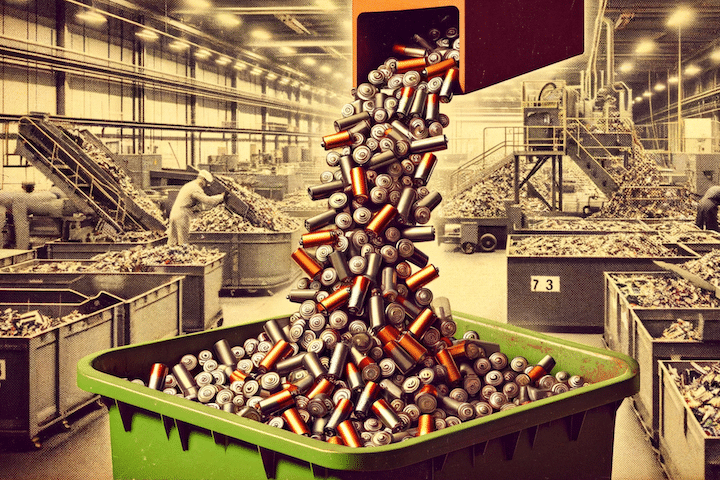
The Great Battery Manufacturing Race
China has been the world's biggest battery manufacturer for over a decade. By 2022, according to the IEA, China manufactured 76% of the world's batteries. But that's changing.
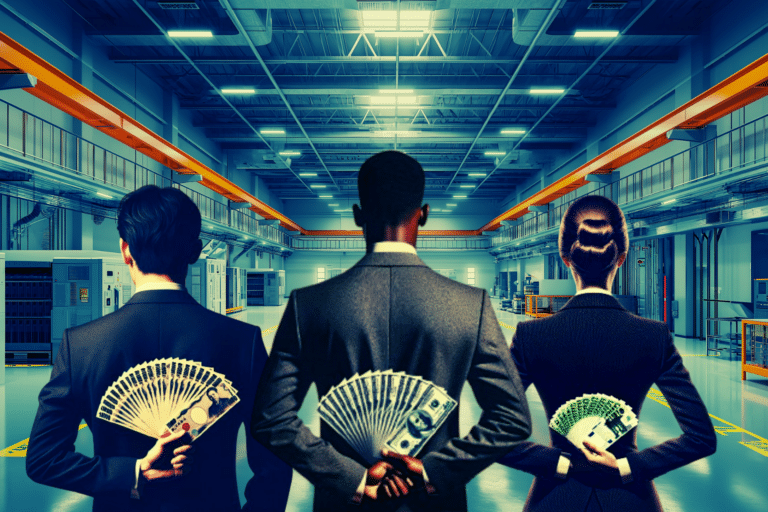
The High Stakes for Battery Ingredients
Batteries can replace gasoline in our cars, or diesel in our generators with electricity. But batteries and petroleum-based fuels share something in common: they both rely on energy-intensive processes to turn extracted materials into something useful.

The Mining Conundrum For Critical Minerals
To produce enough batteries to reach global net-zero goals, the International Energy Agency says we'll need to increase production of critical minerals by six fold by 2040. It's a monumental task.

Relevant
Publications
The Potential Contribution of Enhanced Geothermal Systems to Future Power Supply: Roundtable Summary
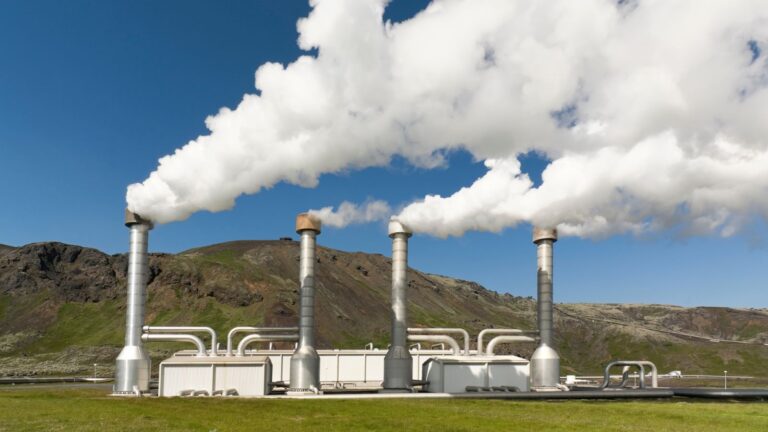
Can AI Transform the Power Sector?
AI’s growing power demand has received enormous attention in recent months. In many places, the lack of power supplies is an important constraint on the growth of data centers to train and run AI models.
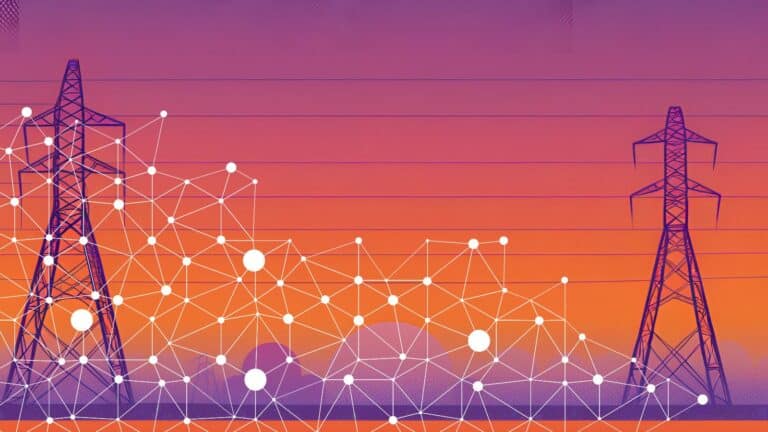
Insights from the US and India for Electricity Open Access in Kenya and South Africa
Kenya and South Africa have recently started moving toward an open access regime in their electricity sectors, while the US and India have been on this path for over two decades.
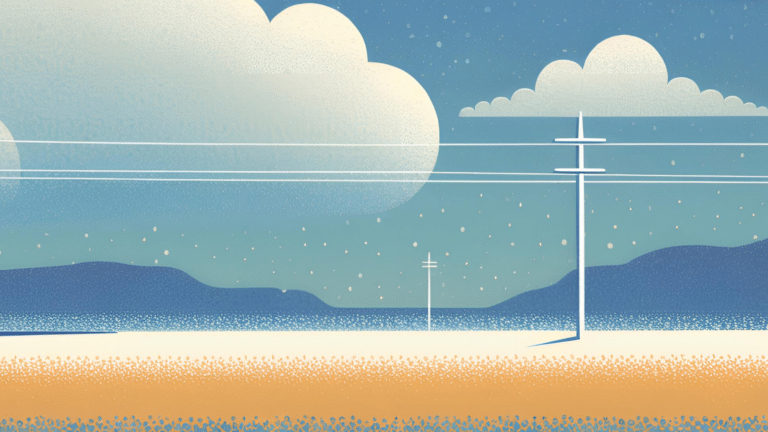
Addressing Energy Insecurity via Utility Ratemaking
About one in four American households experience some form of energy insecurity. Within this group, Black, Indigenous, Latine, low- and moderate-income (LMI), and other disadvantaged communities face a disproportionately higher burden.
